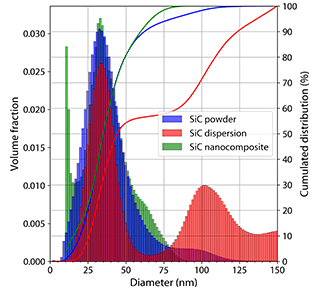Sponsored by Xenocs SASReviewed by Louis CastelOct 17 2022
Nanoparticles are being produced at an increasing rate and have become an essential building block for the development of new materials with improved properties.
The performance of the final products depends on the nanoparticles’ chemical compozition, size and capacity to maintain a dispersed state throughout the processing phases.
Small Angle X-Ray Scattering (SAXS) is a non-destructive method that requires minimal sample preparation to allow material structure determination in the range of 1–250 nm. Over a high volume (typically 1 mm3), it offers statistically pertinent information.
As a result, it complements microscopy techniques that only provide local information. This application note illustrates how SAXS, coupled with a unique data analysis algorithm, can be successfully applied to industrial batches of nanoparticles at multiple process phases.
Nanomakers is a producer of nanoparticles and nanocomposites. SAXS is the only method capable of precise nanoscale size determination of dry powders, nanocomposites and dispersions, which provides Nanomakers with nanostructural information throughout the whole production chain.
Measurements and Results
Using the Nano-inXider, a batch of SiC powder created by Nanomakers, with a modal size of 33.5 nm according to transmission electron microscopy, has been characterized in three different forms.
Following data reduction, the experimental scattering profiles were fitted using the Expectation Maximization algorithm (EM)1 implemented in the XSACT software from Xenocs to ascertain the size distribution of the nanoparticles. Figure 1 displays size distributions derived from SAXS data.

Figure 1. Particle size distributions obtained by SAXS on the SiC nanoparticles measured as a dry powder, as a dispersion or as a nanocomposite. Image Credit: Xenocs
Click here to gain access to the complete application note
References
- F. Benvenuto, H. Haddar, and B. Lantz, SIAM Journal on Applied Mathematics, 2016, 76 (1), pp.276-292

This information has been sourced, reviewed and adapted from materials provided by Xenocs.
For more information on this source, please visit Xenocs.